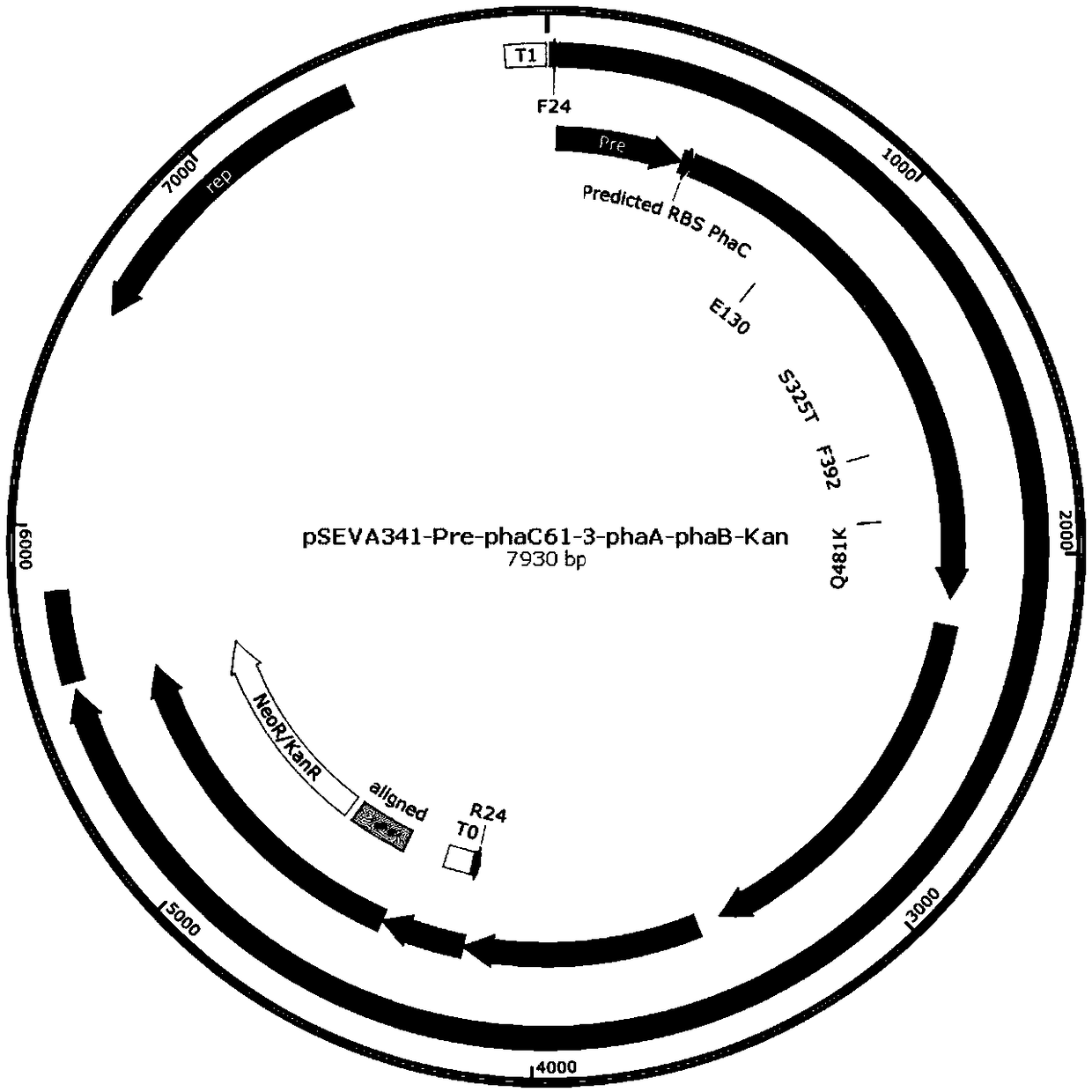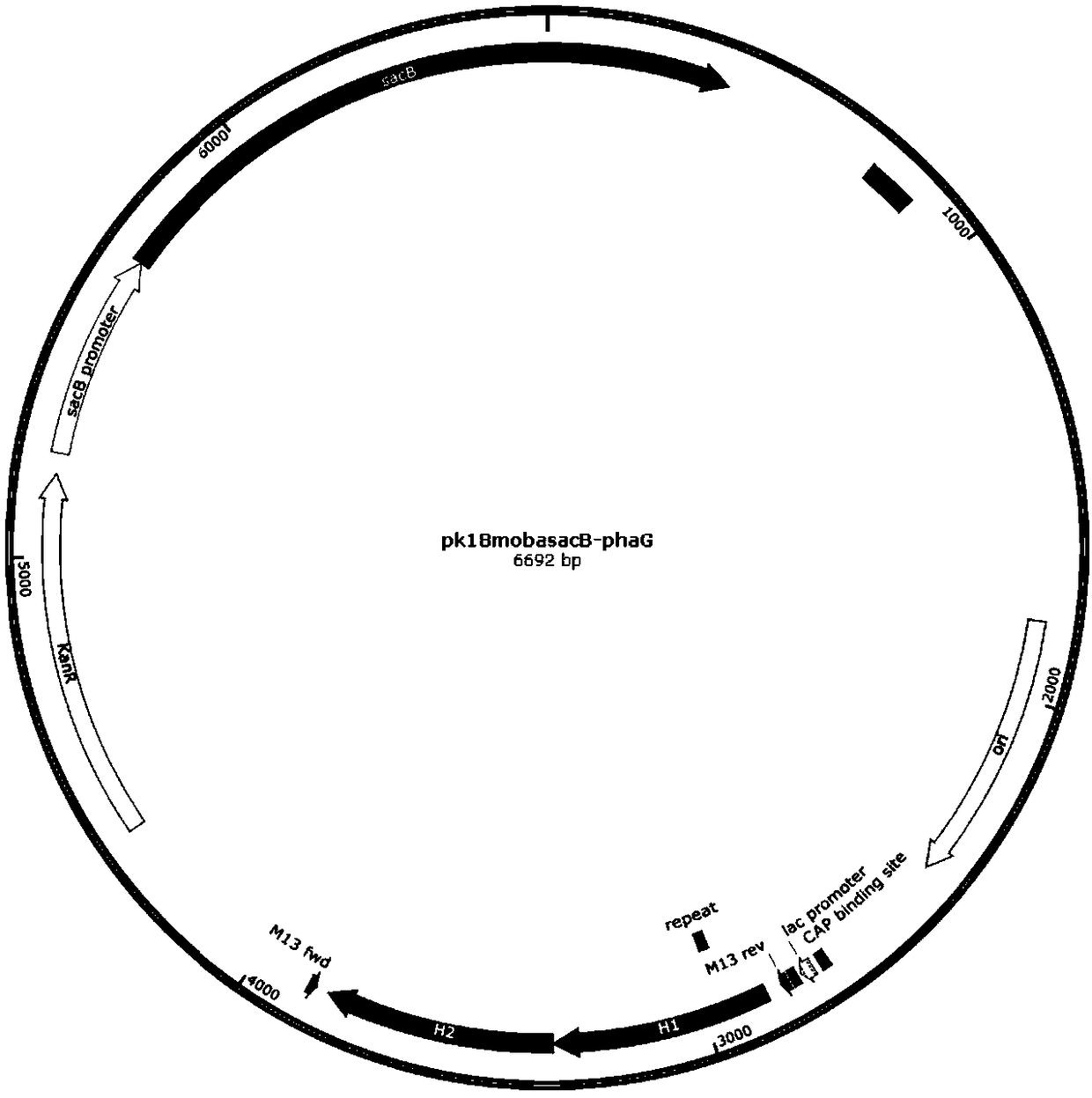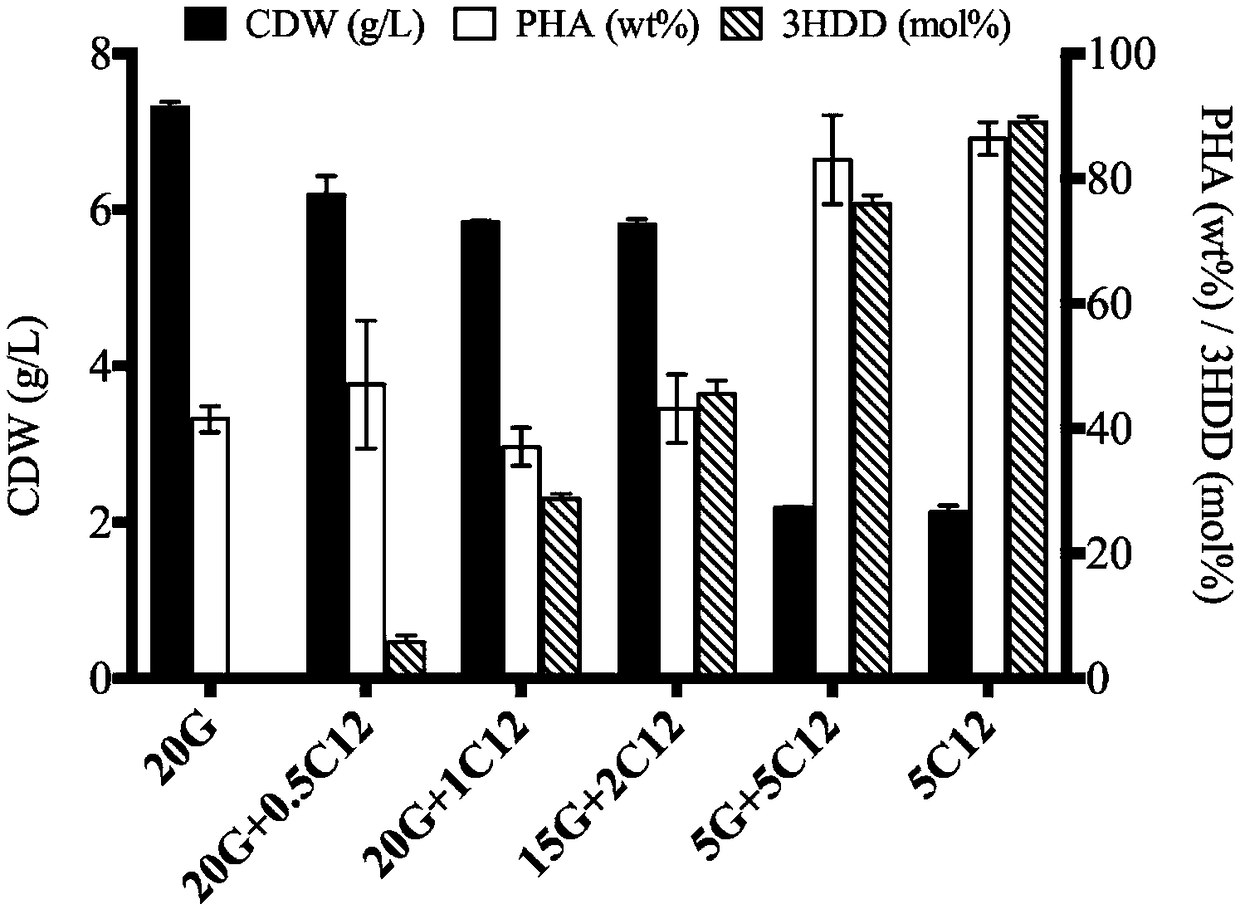Method for producing short, medium and long chain polyhydroxyfatty acid copolymers by microorganisms
A technology of polyhydroxyalkanoate and hydroxyalkanoate, which is applied in the field of microbial production of short, medium and long-chain polyhydroxyalkanoate copolymers, which can solve the problems of difficult to ensure stable material properties, large differences, and incomplete weakening
- Summary
- Abstract
- Description
- Claims
- Application Information
AI Technical Summary
Problems solved by technology
Method used
Image
Examples
Embodiment 1
[0097] Embodiment 1, preparation recombinant pseudomonas
[0098] 1. Preparation of plasmid pSEVA341-Pre-phaC61-3-phaA-phaB-Kan
[0099] The plasmid pSEVA341-Pre-phaC61-3-phaA-phaB-Kan was prepared, as shown in sequence 1 of the sequence listing. The schematic diagram of the structure of plasmid pSEVA341-Pre-phaC61-3-phaA-phaB-Kan is as follows figure 1 Shown is a circular plasmid.
[0100] In sequence 1 of the sequence listing, nucleotides 33-428 are the Pre promoter, nucleotides 464-2143 are the phaC61-3 gene, nucleotides 2228-3409 are the phaA gene, and nucleotides 3484-4224 The first nucleotide is the phaB gene, and the 4780-5574th nucleotide is the kanamycin resistance gene.
[0101] 2. Preparation of P.entomophila LAC31 (pSEVA341-Pre-phaC61-3-phaA-phaB-Kan)
[0102] 1. Introduce the plasmid pSEVA341-Pre-phaC61-3-phaA-phaB-Kan into Escherichia coli S17-1 to obtain recombinant bacteria named E.coli S17-1 (pSEVA341-Pre-phaC61-3-phaA-phaB-Kan ).
[0103] 2. Co-cultivat...
Embodiment 2
[0121] Embodiment 2, application of recombinant Pseudomonas to produce P(3HB-co-3HDD)
[0122] 1. Application of P.entomophila LAC31 (pSEVA341-Pre-phaC61-3-phaA-phaB-Kan)
[0123] 1. Prepare the seed liquid of P. entomophila LAC31 (pSEVA341-Pre-phaC61-3-phaA-phaB-Kan).
[0124] 2. Fermentation with glucose as the sole carbon source
[0125] Take 2.5mL of the seed liquid obtained in step 1, inoculate it into 47.5mL of fermentation medium, and cultivate it with shaking at 30°C and 200rpm for 48 hours. Fermentation medium: LB medium containing 50mg / L kanamycin and 25g / L glucose.
[0126] 3. Fermentation with glucose and lauric acid as carbon sources
[0127] Take 2.5mL of the seed liquid obtained in step 1, inoculate it into 47.5mL of fermentation medium, and cultivate it with shaking at 30°C and 200rpm for 48 hours. Fermentation medium: LB medium containing 50mg / L kanamycin, 20g / L glucose and 5g / L lauric acid.
[0128] 4. Determination of dry cell weight, PHA content of bacte...
Embodiment 3
[0146] Example 3, Synthesis of P(3HB-co-3HDD) in different proportions with P.entomophila LAC32
[0147] 1. Prepare the seed solution of P. entomophila LAC32 (pSEVA341-Pre-phaC61-3-phaA-phaB-Kan).
[0148] 2. Fermentation
[0149] Take 2.5mL of the seed liquid obtained in step 1, inoculate it into 47.5mL of fermentation medium, and cultivate it with shaking at 30°C and 200rpm for 48 hours.
[0150] The fermentation medium is any of the following:
[0151] Fermentation medium 20G: LB medium containing 50mg / L kanamycin and 20g / L glucose;
[0152] Fermentation medium 20G+0.5C12: LB medium containing 50mg / L kanamycin, 20g / L glucose and 0.5g / L lauric acid;
[0153] Fermentation medium 20G+1C12: LB medium containing 50mg / L kanamycin, 20g / L glucose and 1g / L lauric acid;
[0154] Fermentation medium 15G+2C12: LB medium containing 50mg / L kanamycin, 15g / L glucose and 2g / L lauric acid;
[0155] Fermentation medium 5G+5C12: LB medium containing 50mg / L kanamycin, 5g / L glucose and 5g / L...
PUM
 Login to View More
Login to View More Abstract
Description
Claims
Application Information
 Login to View More
Login to View More - R&D
- Intellectual Property
- Life Sciences
- Materials
- Tech Scout
- Unparalleled Data Quality
- Higher Quality Content
- 60% Fewer Hallucinations
Browse by: Latest US Patents, China's latest patents, Technical Efficacy Thesaurus, Application Domain, Technology Topic, Popular Technical Reports.
© 2025 PatSnap. All rights reserved.Legal|Privacy policy|Modern Slavery Act Transparency Statement|Sitemap|About US| Contact US: help@patsnap.com



